









Forests are the kingdom not only of plants. Many animals have established their homes in forests and are able to find everything they need there.
From the hot jungle to the cold snow forest, all animals that spend their lives on trees or under their shade, know how to survive.
They move, take care of their young, collect and store food, hide and always find a safe shelter in the intricate maze of trunks, branches and leaves.
The antlers of the deer fall out every year as soon as the mating season ends. Losing antlers is fortunate for these animals as they will be able to grow even larger ones the following year.
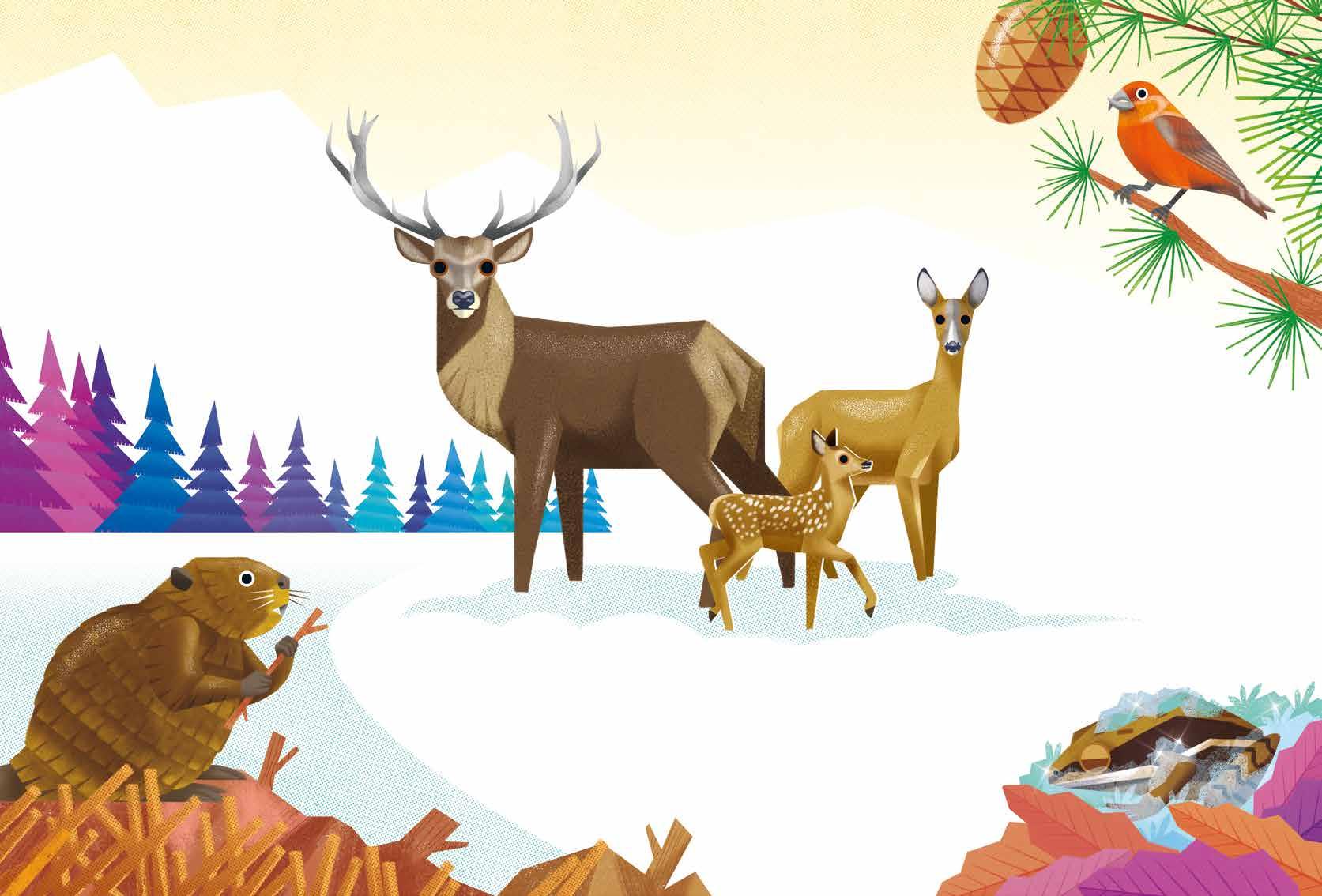
By wedging tree branches, beavers erect dikes to block the flow of a small river, thereby creating a lake. At the center of the lake, they build their lair, inside which they can live more peacefully, protected by wolves, coyotes, and pumas, who cannot reach them there.
The beak of this bird looks malformed because the tips are crossed. It is the ideal tool to collect the pine nuts that the crossbill feeds on, as the beak is able to crack the pinecones open without much effort.

To survive the long, freezing winter, the frog hibernates. Thanks to an antifreeze substance in its blood, the frog can stop its heart and its breathing, while ice crystals form inside its body. In spring it thaws and returns to activity.
At birth the fawn has some light spots scattered on its back, that disappear with age. This coloring, imitating the combination of light and shadow of the undergrowth, makes the fawn invisible to predators, while it waits for its mother, hidden under a bush.
The name comes from its tail: large, short, and covered with big, pointed scales. The uromastyx uses it to protect itself, but also to block the entrance to its lair which is dug into the ground.
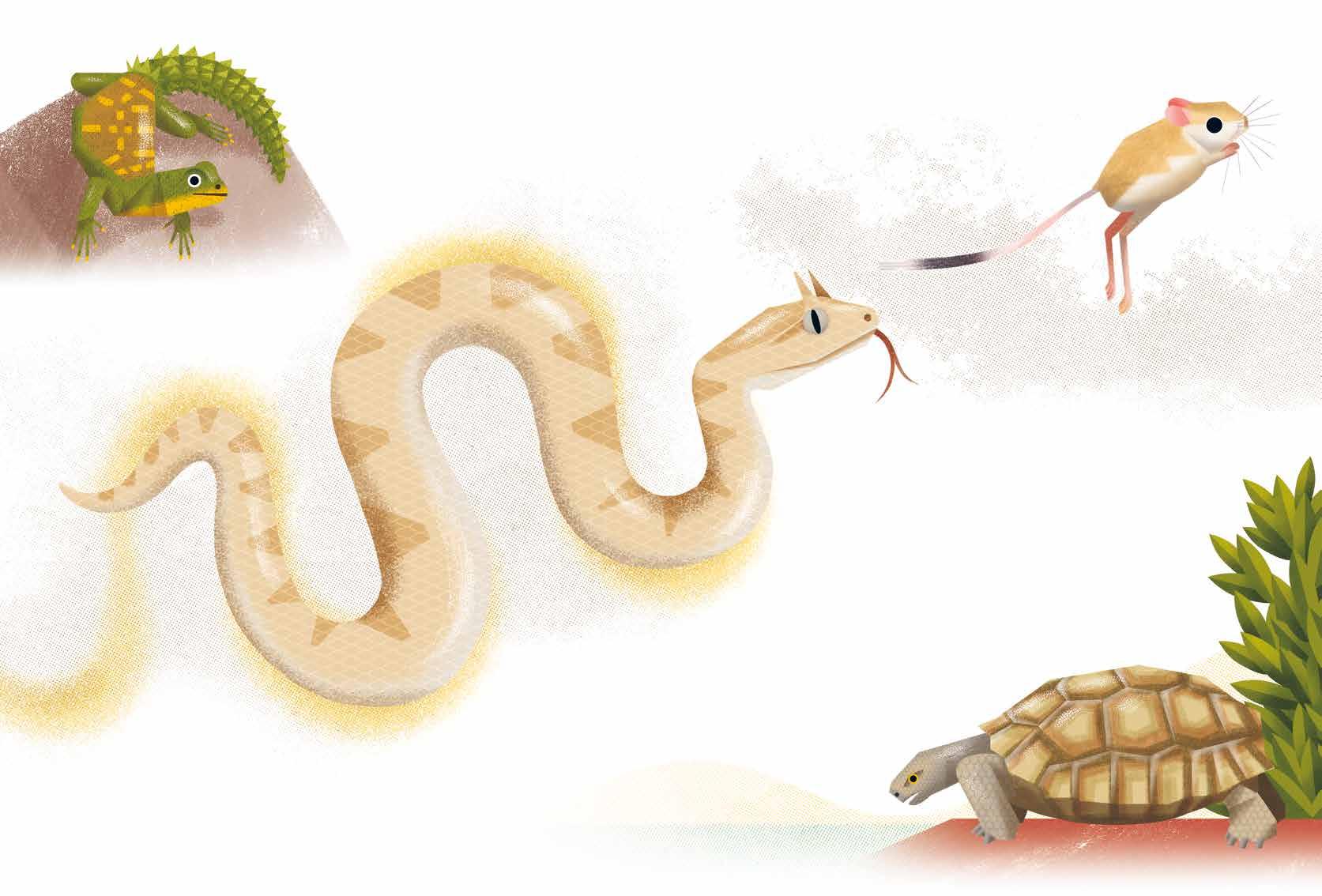
Crawling on the hot sand of the desert is not easy; for this reason, the Sahara sand viper makes sure that at any moment, only two points of its body touch the ground. The result is an oblique “wave” movement.
Why does the kangaroo rat have very long hind legs?
As you can imagine, the kangaroo rat does not walk, it jumps! It has huge hind legs, which allow it to make incredible 8-feet leaps of the length of a motorcycle!

Why does the desert horned viper have two horns above the eyes?
The two small horns protruding from its head protect the eyes as the viper crawls around its world of sand.
Why can a shock be dangerous for the desert tortoise?
When it finds some water, this tortoise stores it up... in its bladder. However, if it gets frightened, she can involuntarily release the precious liquid and wet itself.
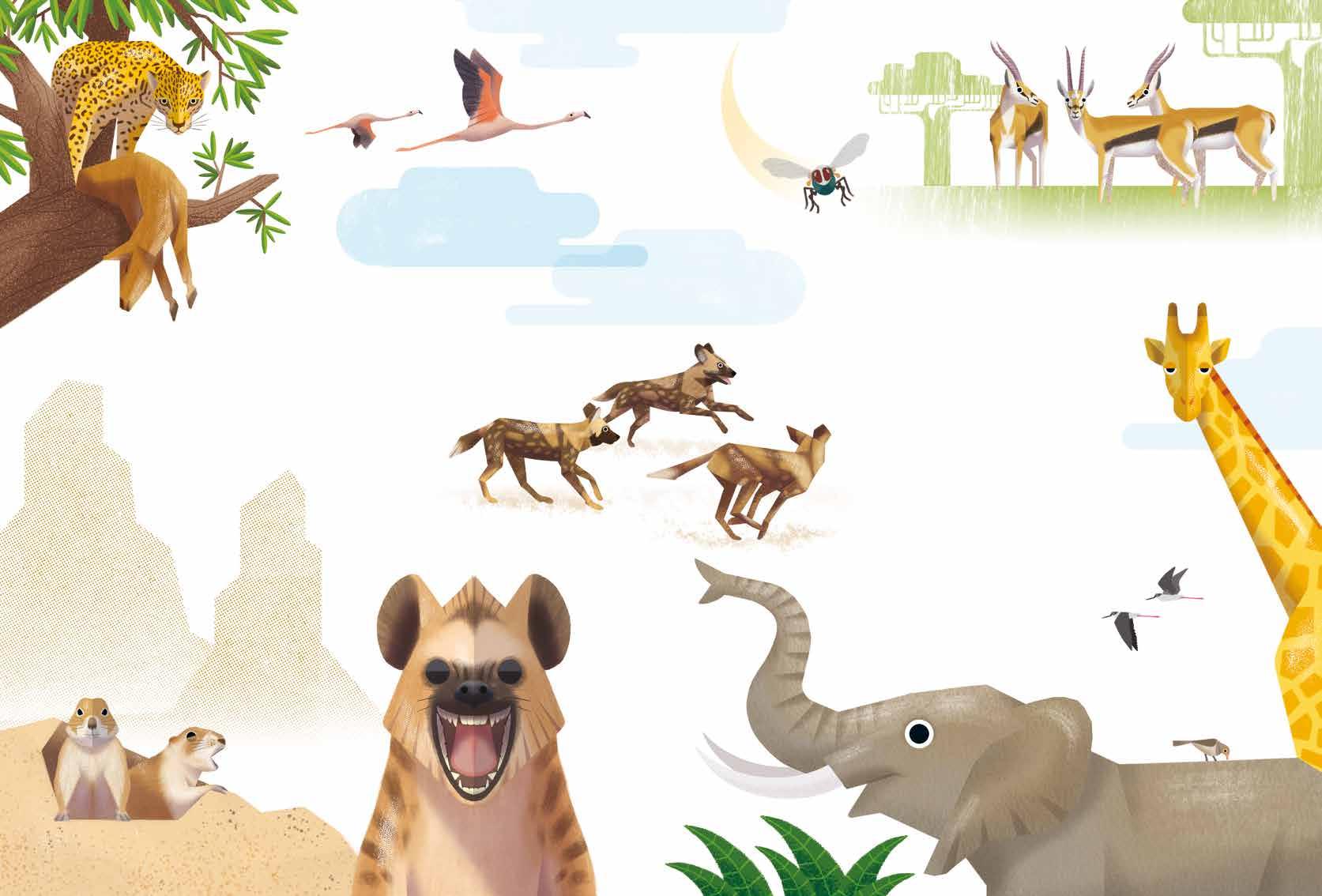

Savannas and grasslands, where grass grows abundantly, are the ideal place for antelopes, zebras and many other herbivores, who gather here to form large herds.
And with so many herbivores, come numerous carnivores: some chase their prey, others take them by surprise, waiting to ambush.
Some animals dig underground burrows to protect themselves from predators or from the heat and there are many who take advantage of the darkness of the night to hunt or to escape an attack.
Giraffes have purplish blue, almost black, tongues. Such a dark color is useful to protect the tongue from the sun’s rays and prevents it from getting burned.
The neck is certainly the most noticeable feature of the giraffe. Thanks to it, the giraffe manages to collect leaves from the highest branches, which other herbivores cannot reach. Males use their necks to fight each other, hitting the rival’s belly with it.
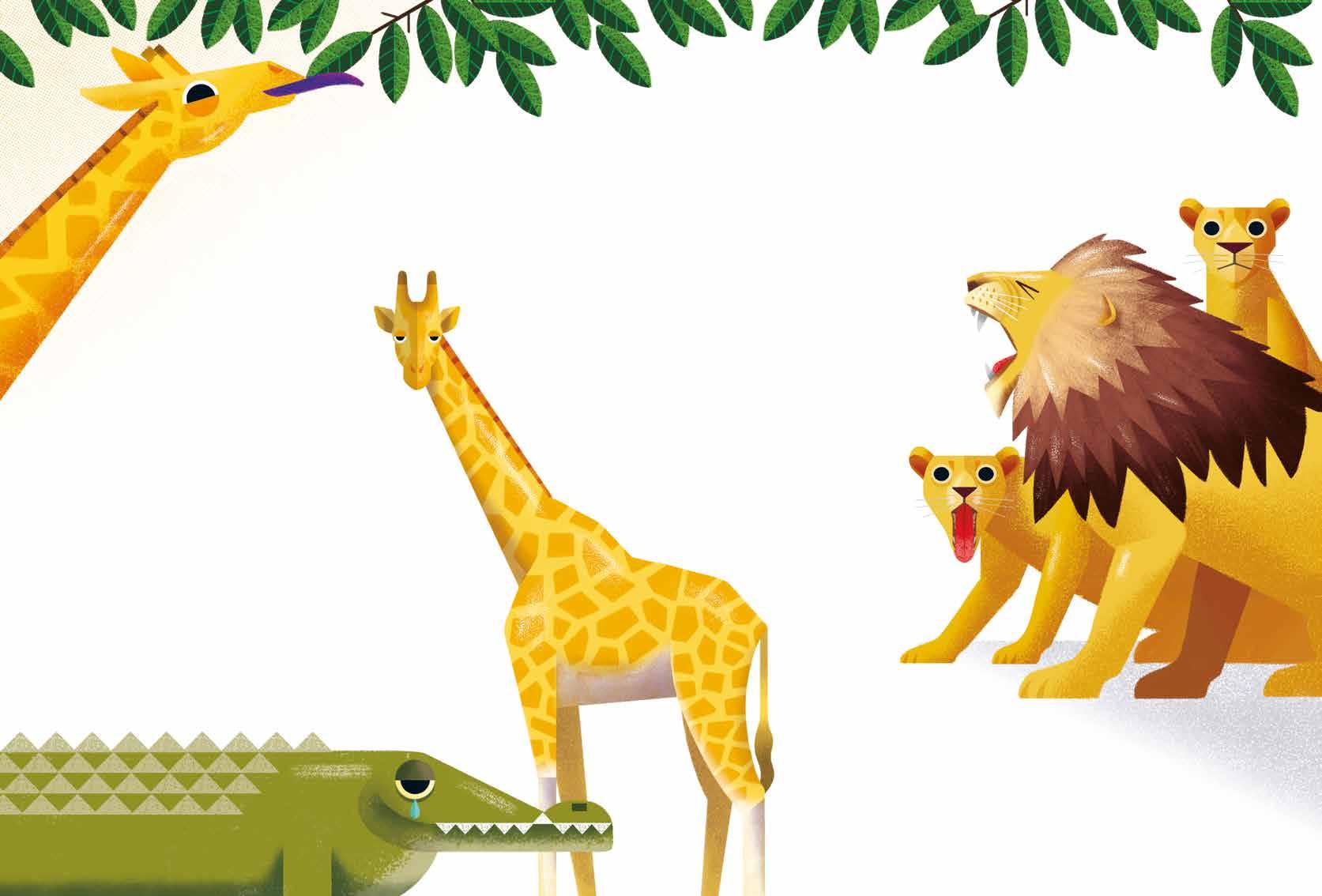
When crocodiles spend a lot of time out of the water, their eyes dry out and only by releasing tears they become wet again. Of course, the crying is not due to remorse for the killed prey!
Male lions proudly wear their mane to show how healthy and strong they are. The thicker and darker the mane, the more attractive it is to females who will be able to choose the best father for their offspring.

The lion has a rough tongue like sandpaper. It is covered with tiny backward-facing spines, very useful for scraping away the flesh of the prey from its bones. Never let a lion lick your hand, because it would leave you skinless in no time!
Male lions use their powerful roar to scare off intruders, warning them that they are invading their territory, but also to warn the members of the herd of potential danger.
The abdomen of the hermit crab is soft and delicate and therefore needs protection. For this reason, the crab looks for an empty shell and occupies it, slipping inside, but leaving the claws exposed. It then wanders with the shell on its back, ready to change it when it gets too small.
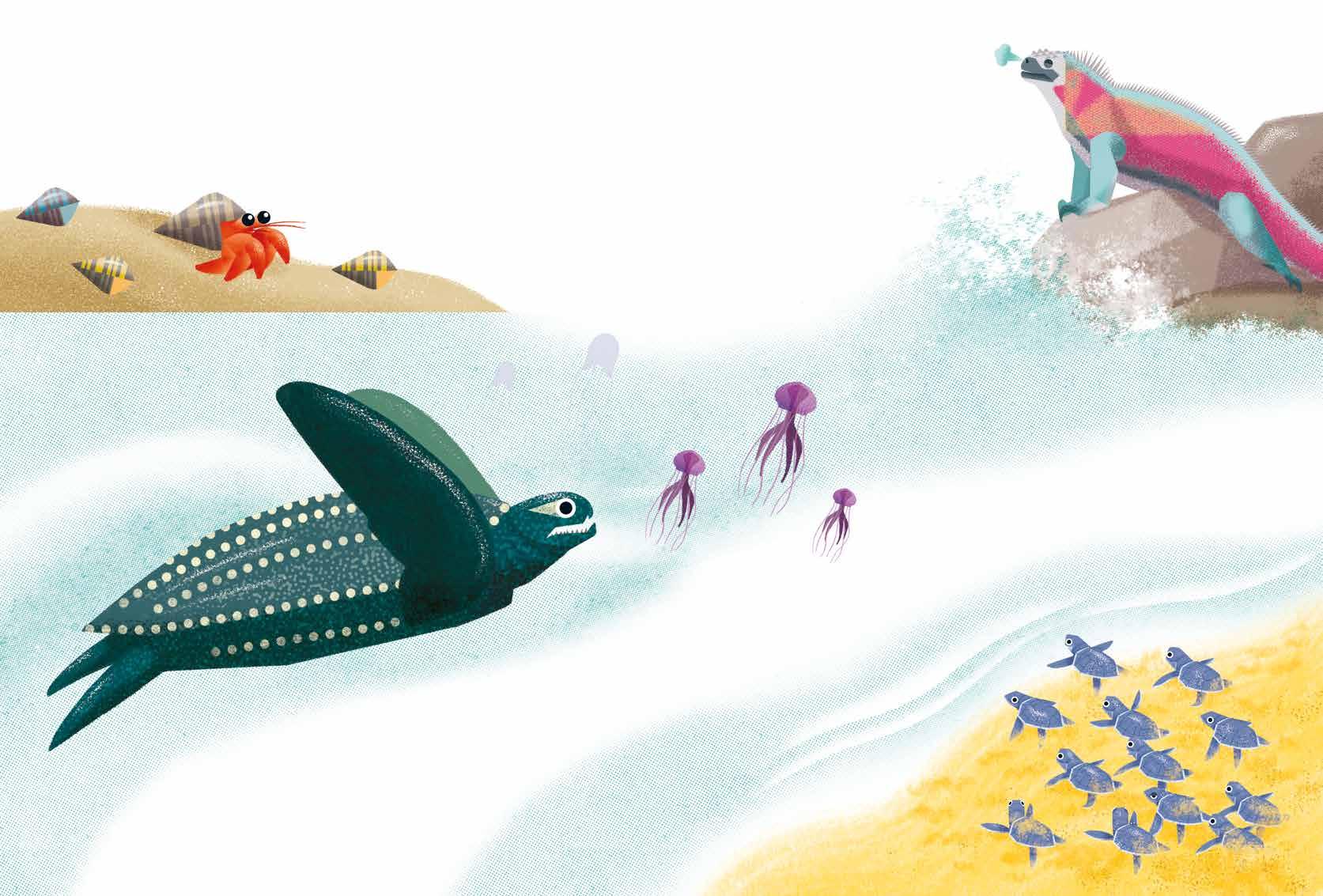
Inside the leatherback turtle’s mouth, there are hundreds of small, pointed teeth. Because it feeds on jellyfish, the turtle can hold onto the soft prey with its teeth and prevent them from escaping.
They often ingest a large amount of salt water. To avoid harm to their body, they have to remove the salt from their blood, but not the water! The most practical way to do this is through powerful and frequent sneezing.

Jellyfish are very simple creatures. To catch a prey, which is much faster than them, they must first stun it. They do this with a stinging substance contained in special cells of their tentacles. On contact, these cells “shoot” a small poisonous harpoon.
In order to develop, embryos must breathe air through the porous shell, which they could not do if the eggs were immersed in water.
The moray eel opens its mouth and shows its teeth, but not as a sign of threat. It is simply breathing. Unlike other fish, it has to forcefully pump water through its gills to have oxygen, continuously opening and closing its mouth.
Few people know that the octopus is a master of disguise. When a predator shows up, it changes the colors of its skin and in a short time it disappears, merging with the seabed, becoming indistinguishable from rocks and corals.
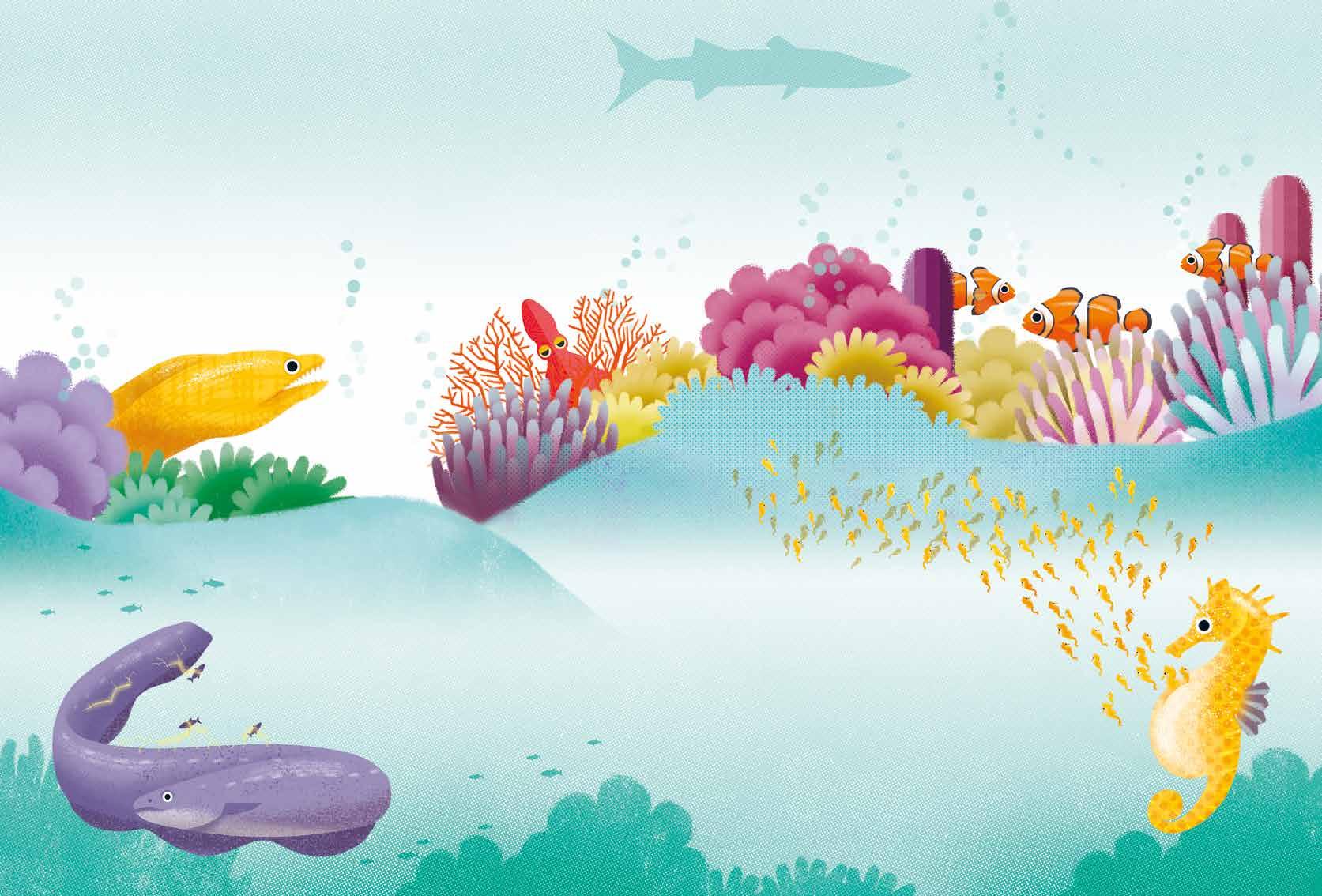
The electric eel searches for its prey by swimming slowly. Having no teeth, it puts in place an ingenious system for the capture. It is in fact capable of producing short electric discharges, strong enough to stun those who come within range and easily eat them.
Clownfish know that the sea anemone stings, but they are not afraid of it because they are immune to poison, thanks to a special mucus that covers their body. What place could be safer for them? No predator dares to approach the anemones tentacles.

It is the male who takes care of the eggs, protecting them in a leather sac in the abdomen. This pouch can hold over 100 eggs, protected in a liquid that gives them nourishment. When they hatch, the father lets the little ones out of the pouch as in childbirth.